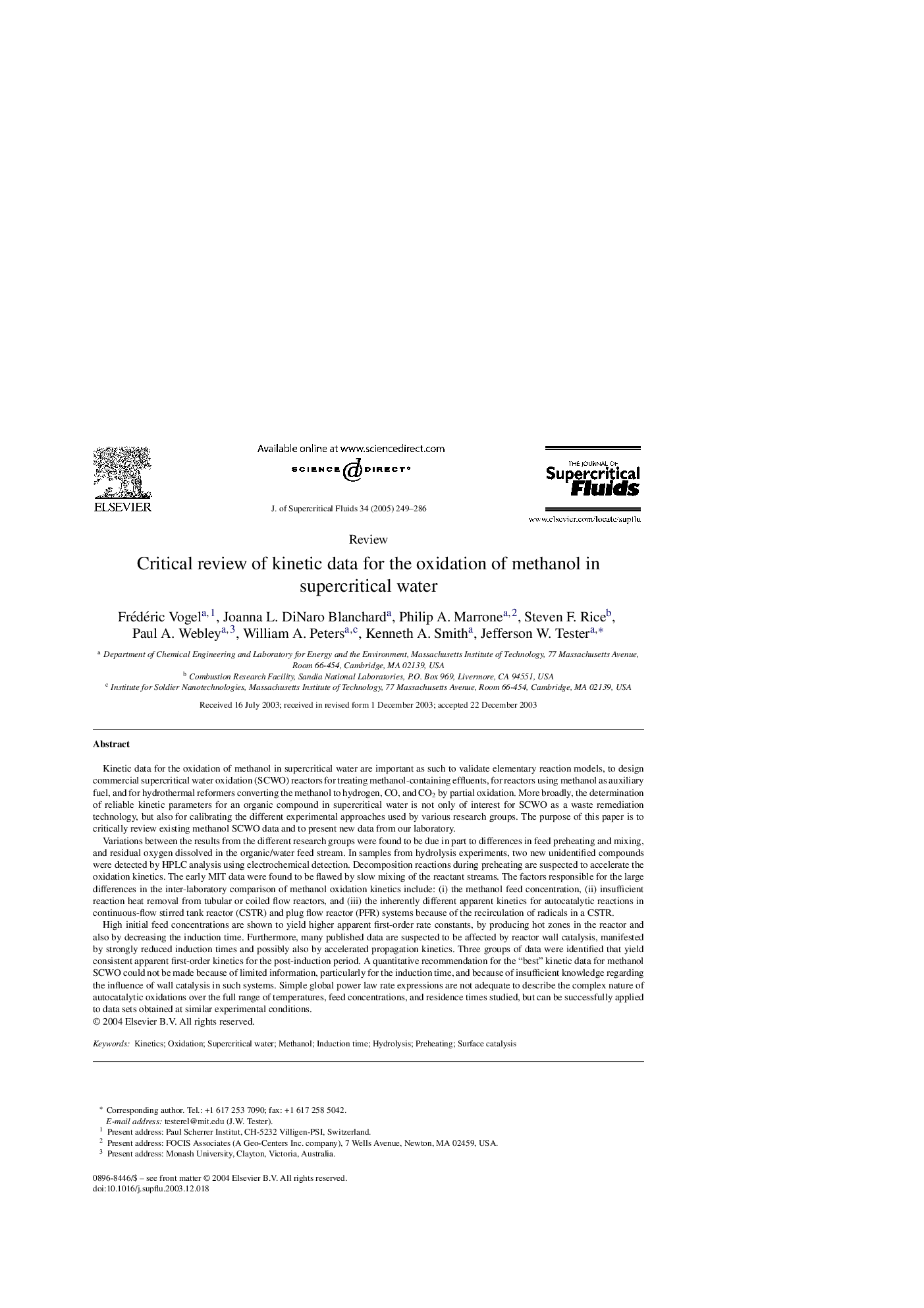| Article ID | Journal | Published Year | Pages | File Type |
|---|---|---|---|---|
| 9635797 | The Journal of Supercritical Fluids | 2005 | 38 Pages |
Abstract
High initial feed concentrations are shown to yield higher apparent first-order rate constants, by producing hot zones in the reactor and also by decreasing the induction time. Furthermore, many published data are suspected to be affected by reactor wall catalysis, manifested by strongly reduced induction times and possibly also by accelerated propagation kinetics. Three groups of data were identified that yield consistent apparent first-order kinetics for the post-induction period. A quantitative recommendation for the “best” kinetic data for methanol SCWO could not be made because of limited information, particularly for the induction time, and because of insufficient knowledge regarding the influence of wall catalysis in such systems. Simple global power law rate expressions are not adequate to describe the complex nature of autocatalytic oxidations over the full range of temperatures, feed concentrations, and residence times studied, but can be successfully applied to data sets obtained at similar experimental conditions.
Keywords
Related Topics
Physical Sciences and Engineering
Chemical Engineering
Chemical Engineering (General)
Authors
Frédéric Vogel, Joanna L. DiNaro Blanchard, Philip A. Marrone, Steven F. Rice, Paul A. Webley, William A. Peters, Kenneth A. Smith, Jefferson W. Tester,
